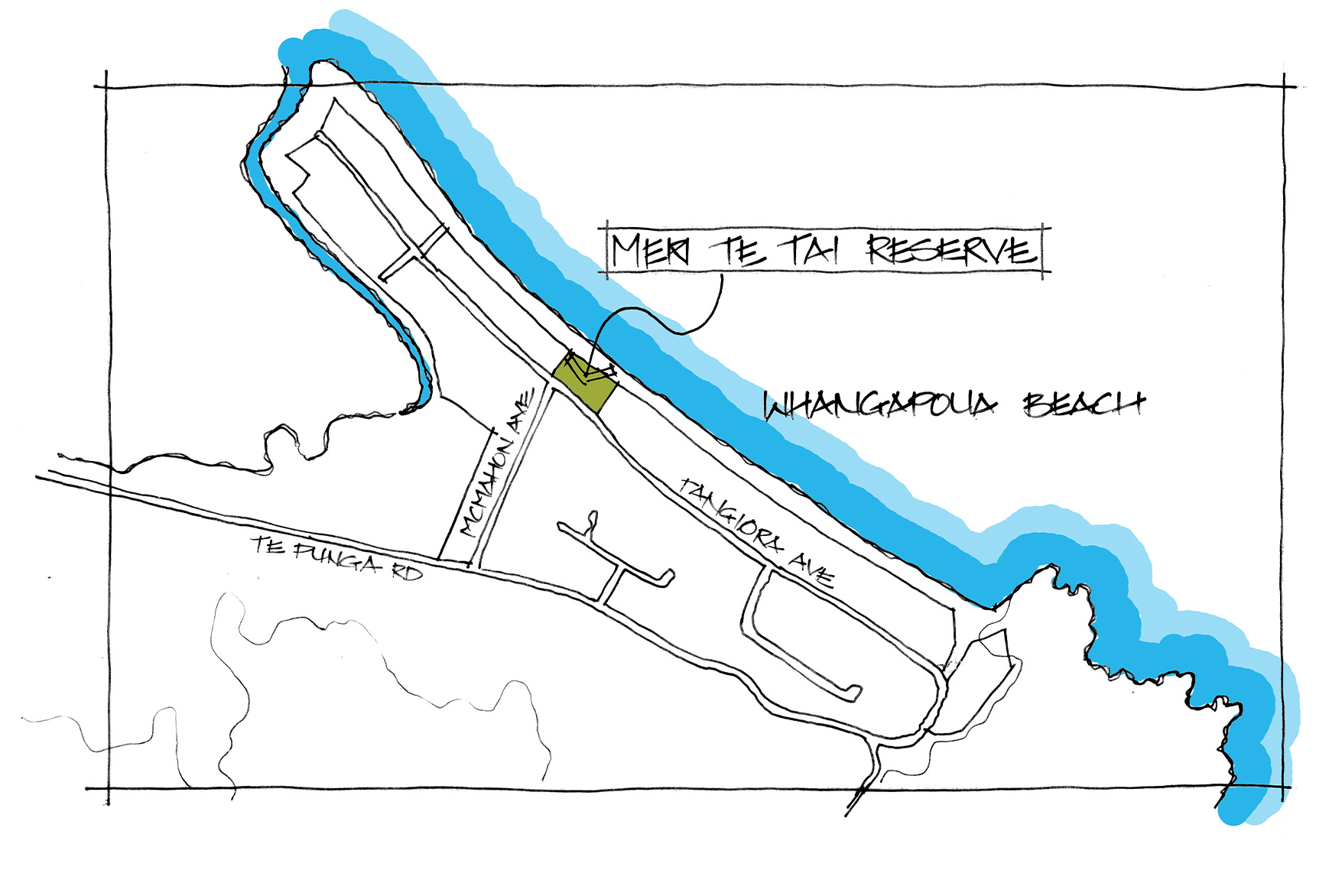Whangapoua settlement and harbour hinterland has a permanent population of approximately 177 residents. This population swells to over 1,000 during the peak summer holiday period. This means that the reserve had to be flexible to cater for the transient population of Whangapoua.
The reserve is named in honour of Meri Te Tai Mangakahia, who is one of the Coromandel’s most famous historic figures. She was one of the first woman to speak at the Māori Parliament and involved in the woman’s suffrage movement.
The site lacked a sense of arrival, with strong disconnection between spaces. Facilities on site were tired and in need of repair or replacement, with a disorder of hierarchy associated with the assets.
The design looked to amend these issues by capitalising on the breath-taking location of the reserve and the wider landscape context which it sits in through creating strong connections, visual and physical, to these landscape landmarks. This notion is reflective of inclusion and connection, which reflects the causes in which the reserve’s namesake, Meri Te Tai Mangakahia dedicated herself to.
An extension of dune planting into the reserve draws the broader landscape in, while also enhancing the ecology of the site and the coastal context by creating important dune habitat. This protects against natural phenomenon like coastal erosion and acts as a visual amenity. The incorporation of several other initiatives such as the replacement of key facilities like the toilet blocks and playground in a rearrangement of the activities improves the functionality of the site for all users.

